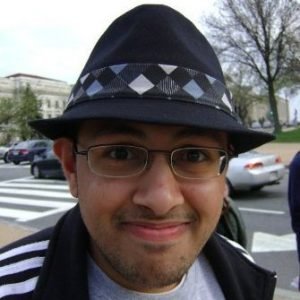There is a Pakistani & this is how he made his way to CERN

There was a boy named Sameed Muhammed. He grew up in Islamabad(Pakistan) in middle class family. His family was very overaly suspicious for their children education. His family did not care about grades, but they focused on the character building and acquiring knowledge.When he comes form the school his mom always ask only one question from Sameed "What you learned today". His mom listened his story of what he did in school every day. In this his mom laid the foundation of future scientist.
He studied hard in school and always takes the top position in his class. In 2007 he completed his BA in Physics from Cornell University United States and also invited in Mathematics camp at Stanford University.After graduating he still do not know what he want to do in his life. After some time he received invitation from CERN to introduce the particle physics to their summer students. CERN is most scientific research center in the world. it operates the most largest particle physics laboratory center in the world.After getting invitation from CERN. He was excited because from the Pakistan two person was selected.
After spending time at CERN. That was life changing point for Sameed. In the morning they spend their time in attending the lecture of particle physics.In the afternoon they spend their time in their individual research projects. At night they played games ,finished laundry and cook food. By the end of summer camp he decided two things one is to be scientist and other is to be at CERN.
After some time he passed his Msc at KASUT Saudi Arabia. he sent emails to target professor for PHD positon. One of them professor decide to take him in his research project. He appoint Sameed as full time research at CERN.
He has now completed his Phd.During his time at CERN he worked on properties of antimatter particles, creating and trapping nearly ten thousand anti-hydrogen atoms in the process. Working at CERN has so far been both a rewarding and humbling experience. It takes countless hours of unforgiving work carried out by dozens of individuals to create the most precise physics experiments, with no guarantee of success whatsoever. Thankfully, his research efforts have returned excellent dividends so far: he presently has two publications in Nature and a third one will be published in August this year.